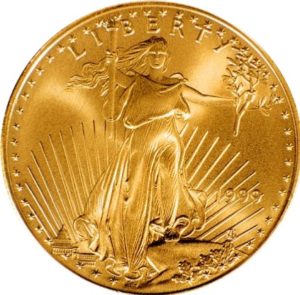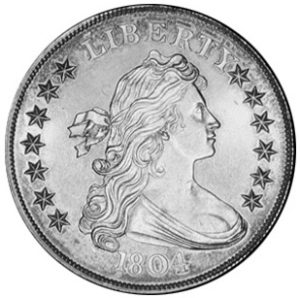This article was written by Jacob Hornberger and originally appeared here.
The U.S. Constitution states:
Article 1, Section 8
1. The Congress shall have Power …
5. To coin Money, regulate the value thereof, and of foreign coin….
6. To provide for the punishment of counterfeiting … current coin of the United States.
Article 1, Section 10
- No state shall … emit Bills of Credit and make any Thing but gold and silver Coin a Tender in Payment of Debts.
The intent of the Framers could not have been clearer. The Constitution clearly and unequivocally brought into existence a monetary system based on gold coins and silver coins being the official money of the United States.
Notice that the states are prohibited from issuing “bills of credit.” What are “bills of credit.” That was the term used during that time for paper money. The Constitution expressly prohibited the states from publishing paper money and making anything but gold and silver coins official legal money.
What about the federal government? The Constitution didn’t expressly prohibit it from emitting “bills of credit” like it did with the states. Does that mean that the federal government was empowered to make paper money the official money of the United States?
No, it does not mean that. In the case of the federal government, its powers are limited to those enumerated in the Constitution. If a power isn’t enumerated, then the federal government is automatically prohibited from exercising it.
Therefore, it was unnecessary for the Framers to provide for an express prohibition on the federal government to make paper money the official legal tender of the nation. All that was necessary was to ensure that the Constitution did not empower the federal government to issue paper money.
The powers relating to money that are delegated to the federal government, which are stated above, expressly make it clear that gold coins and silver coins, not paper, were to be the official money of the country. That is reflected by the power given the federal government to “coin money.” At the risk of belaboring the obvious, one does not “coin” paper. Paper is printed or “emitted.” It is not coined. Coins are coined.
The provision on counterfeiting also expressly confirms that the official money of the United States was to be gold coins and silver coins. The Framers didn’t provide for punishment for counterfeiting paper money because there was no paper money. They provided for punishment for counterfeiting “current coin of the United States.”
Add up all of these provision and there is but one conclusion that anyone can logically and reasonably draw: The Constitution established a monetary system in which gold and silver coins were to be the official money of the United States.
The power to borrow
That’s not to say, of course, that federal officials could not borrow money. The Constitution did give them that power:
Article1, Section 8
1. The Congress shall have Power …
2. To borrow money on the credit of the United States.
When the federal government borrows money, it issues debt instruments to lenders, consisting of bills, notes, or bonds. But everyone understood that federal debt instruments were not money but instead simply promises to pay money. The money that they promised to pay was the gold and silver coins, which were the official money of the country.
And in fact, that was the monetary system of the United States for more than a century, one in which gold coins and silver coins were the official money of the American people.
It is often said that the “gold standard” was a system in which paper money was “backed by gold.” Nothing could be further from the truth. There was no paper money. The “gold standard” was a system where gold coins, along with silver coins, were the official money of the country.
Monetary debauchery and destruction
It all came to an end in the 1930s, when the Franklin Roosevelt regime ordered all Americans to deliver their gold coins to the federal government. Anyone who failed to do so would be prosecuted for a federal felony offense and severely punished through incarceration and fine if convicted.
In return, people were given federal debt instruments, ones that promised to pay money. But since the money was now illegal, the debt instruments were promises to pay nothing. That’s reflected by the Federal Reserve Notes that people now use to pay for things.
Roosevelt’s actions were among the most abhorrent in the history of the United States. In one fell swoop, he and his regime destroyed what had been the finest and soundest monetary system in the history of the world, one that contributed mightily to the tremendous increase in prosperity and standards of living in the 19th century.
What is also amazing is that Roosevelt did it without even the semblance of a constitutional amendment. To change a system that the Constitution established requires a constitutional amendment. That is an arduous and difficult process, which is what the Framers wanted. Roosevelt circumvented that process by simply getting Congress to nationalize people’s gold.
The result of Roosevelt’s illegal and immoral actions regarding money and the Constitution? Moral, economic, and monetary debauchery, which has entailed almost 90 years of plundering and looting people through monetary debasement and devaluation to finance the ever-burgeoning expenses of America’s welfare-warfare state way of life.
The solution
The solution to all this monetary mayhem is go further than the Framers did: Separate money and the state entirely, in the same way that our ancestors separated church and state. Terminate all government involvement in money, including by ending the federal government’s central bank, also known as the Federal Reserve. Establish a free-market monetary system, one in which people are free to choose their own media of exchange. That would go a long way toward restoring liberty, peace, and prosperity to our land.




